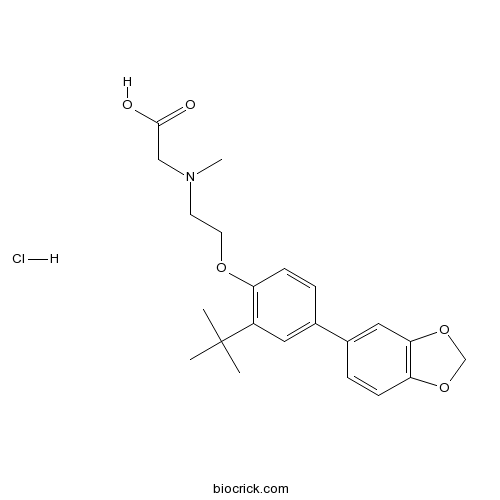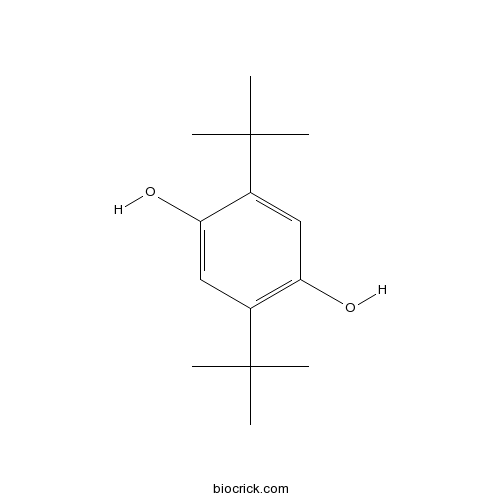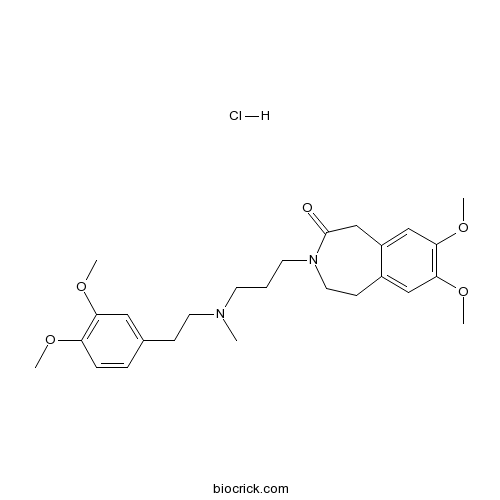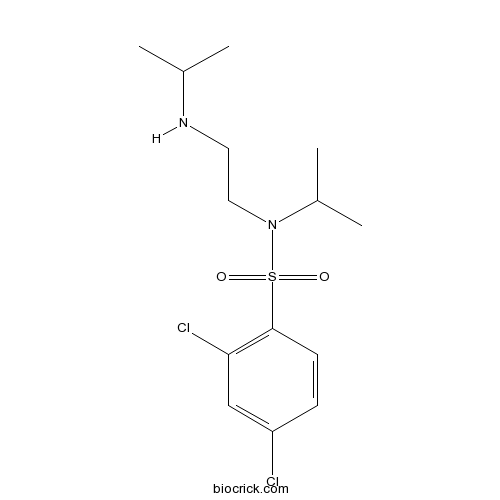Membrane Transporter/Ion Channel
Ion channels are pore-forming membrane proteins whose functions include establishing a resting membrane potential, shaping action potentials and other electrical signals by gating the flow of ions across the cell membrane, controlling the flow of ions across secretory and epithelial cells, and regulating cell volume. Ion channels are present in the membranes of all cells. Ion channels are one of the two classes of ionophoric proteins, along with ion transporters (including the sodium-potassium pump, sodium-calcium exchanger, and sodium-glucose transport proteins)
Products for Membrane Transporter/Ion Channel
- P2X purinergic receptor(31)
- Calcium Channel(77)
- Potassium Channel(80)
- NMDA Receptor(80)
- Sodium Channel(43)
- ATPase(32)
- TRP Channel(44)
- Proton Pump(12)
- AMPAR(49)
- GABA Receptor(103)
- Glycine Transporters(6)
- Chloride Channels(11)
- Glutamate (EAAT) Transporters(19)
- GTPase(7)
- Other Channel Modulators(7)
- CFTR(10)
- Multidrug Transporters(4)
- M2 ion Channel(1)
- Monoamine transporter(4)
- P-gp(6)
- TRPV1(4)
- MCT(2)
- Na+/Ca2+ Exchanger(7)
- Cannabinoid Transporters(7)
- Nucleoside Transporters(3)
- Lipophilic platinum complex(1)
- Monocarboxylate Transporters(1)
- NKCC(2)
- Gardos Channel(1)
- Glycine Receptors(1)
- MCT2(2)
- Glucose Transporters(1)
- ICB(2)
- GlyT1(2)
- Kv1.3(1)
- URAT1(1)
- Cat.No. Product Name Information
-
BCC7820
PG 01
PG01 is a potent CFTR Cl- channel potentiator. PG01 can correct gating defects of CFTR mutants, is effective on b>E193K

-
BCC6930
SKF 89976A hydrochloride
SKF89976A hydrochloride is a selective GABA transporter (GAT-1) inhibitor with IC50s of 0.28 μM, 137.34 μM and 202.8 μM for GAT-1, GAT-2 and GAT-3 in CHO cells, respectively.

-
BCC6745
PK 11195
PK 11195 (RP 52028) is a ligand of translocator protein (TSPO), which targets Leishmania chemotherapy, with IC50s of 14.2 μM, 8.2 μM, 3.5 μM for L. amazonensis, L. major and L. braziliensis, respectively.

-
BCC4375
(-)-Blebbistatin
(-)-Blebbistatin is a selective inhibitor of the ATPase activity of non-muscle myosin II.

-
BCC5860
6-Iodonordihydrocapsaicin
Potent, competitive vanilloid receptor antagonist

-
BCC7677
LY 2365109 hydrochloride

-
BCC7442
WAY 213613
WAY-213613 is a potent, selective nonsubstrate reuptake inhibitor of GLT-1/EAAT2 with IC50 of 85 nM EAAT2. It displays 59- and 44-fold selectivity over EAAT1 and EAAT3 (IC50s are 5 and 3.8 μM, respectively). WAY-213613 shows no activity at ionotropic and metabotropic glutamate receptors. It is a potential tool for the elucidation of EAAT2 function.

-
BCC1836
PAP-1
PAP-1 (5-(4-Phenoxybutoxy)psoralen) is a potent, selective, and orally active Kv1.3 blocker (EC50=2 nM). PAP-1 blocks Kv1.3 in a use-dependent manner and acts by preferentially binding to the C-type inactivated state of the channel. PAP-1 exhibits 23-fold selectivity over Kv1.5 (EC50=45 nM), and further displays 33- to 125-fold selectivity over all other Kv1-family channels. PAP-1 does not exhibit cytotoxic or phototoxic effects.

-
BCC2478
Ivacaftor (VX-770)
Ivacaftor is a potent and orally bioavailable CFTR potentiator, targeting G551D-CFTR and F508del-CFTR with EC50s of 100 nM and 25 nM, respectively.

-
BCC6155
TC-P 262

-
BCC3710
Omecamtiv mecarbil
Omecamtiv mecarbil is a selective cardiac myosin activator.

-
BCC7806
JNJ 303
JNJ 303 is a potent IKs blocker with an IC50 value of 64 nM. JNJ 303 does not have any effects on other cardiac channels at concentrations of 3.3 μM for INa, Ica, Ito, and IKr. JNJ 303 induces QT-prolongations and causes unprovoked torsades de pointes (TdP).

-
BCC1699
Lesinurad
Lesinurad is a URAT1 and OAT inhibitor, is determined to be a substrate for the kidney transporters OAT1 and OAT3 with Km values of 0.85 and 2 µM, respectively.

-
BCC6982
BHQ
Inhibitor of SERCA ATPase

-
BCC6328
Phrixotoxin 3

-
BCC4396
Amlodipine
Amlodipine is a long-acting calcium channel blocker.

-
BCC7861
HC 067047
HC-067047 is a potent and selective TRPV4 antagonist and reversibly inhibits currents through the human, rat, and mouse TRPV4 orthologs with IC50 values of 48 nM, 133 nM, and 17 nM, respectively.

-
BCC6620
W-13 hydrochloride

-
BCC6302
HJC 0350
HJC0350 is a potent and specific EPAC2 antagonist with an IC50 of 0.3 µM.

-
BCC7002
(-)-Xestospongin C

-
BCC6573
Quinolinic acid
Quinolinic acid is an endogenous N-methyl-D-aspartate (NMDA) receptor agonist synthesized from L-tryptophan via the kynurenine pathway and thereby has the potential of mediating N-methyl-D-aspartate neuronal damage and dysfunction.

-
BCC4404
Manidipine
Manidipine is a calcium channel blocker that is used clinically as an antihypertensive.

-
BCC4405
Manidipine 2HCl
Manidipine dihydrochloride (CV-4093) is a dihydropyridine compound and a calcium channel blocker for Ca2+ current with IC50 of 2.6 nM.

-
BCC5424
VU 0240551
VU 0240551 is a small molecule inhibitor of the neuronal K-Cl cotransporter, KCC2 (IC50 = 560 nM for K+ uptake assay in KCC2-overexpressing cells).

-
BCC6361
LDN 212320
LDN-212320(OSU-0212320) is a glutamate transporter EAAT2 activator; enhances EAAT2 levels by > 6 fold at concentrations < 5 μM after 24 h.

-
BCC6639
YS-035 hydrochloride

-
BCC1317
A 438079 hydrochloride
A 438079 (hydrochloride) is a potent, and selective P2X7 receptor antagonist with pIC50 of 6.9.

-
BCC1316
A 438079
A 438079 is a potent, and selective P2X7 receptor antagonist with pIC50 of 6.9.

-
BCC7147
Cl-HIBO

-
BCC4395
Benidipine HCl
Benidipine hydrochloride is a dihydropyridine calcium channel blocker for the treatment of high blood pressure (hypertension).

-
BCC7446
UCL 2077
UCL 2077 is a selective slow-afterhyperpolarization (sAHP) channel blocker (IC50 = 500 nM in hippocampal neurons in culture), having minimal effects on Ca2+ channels, action potentials, input resistance and the medium after hyperpolarization. UCL 2077 is also a subtype-selective blocker of the epilepsy associated KCNQ channels.

-
BCC7230
Ro 15-4513
Ro15-4513, imidazobenzodiazepinone derivative, is a partial inverse agonist of benzodiazepine receptor (BZR). Ro15-4513 is a potent ethanol antagonist. Ro15-4513 has anti-anxiety effect.

-
BCC7286
Zatebradine hydrochloride
Zatebradine (UL-FS-49 (free base)) is a potent inhibitor of hyperpolarization-activated cyclic nucleotide-gated (HCN) channels with an IC50 values 1.96 µM. Zatebradine blocks the slow inward current through human HCN1, HCN2, HCN3 and HCN4 channels, with IC50 values of 1.83 µM, 2.21 µM, 1.90 µM and 1.88 µM, respectively.

-
BCC6327
Jingzhaotoxin III

-
BCC7834
AMTB hydrochloride

-
BCC5957
DPNI-caged-GABA
Nitroindoline-caged GABA

-
BCC2084
PF-03716556
PF 03716556 is a potent, and selective H+, K+-ATPase antagonist, with a pIC50 value of 6.009.

-
BCC5248
PPQ-102
PPQ-102 is a potent CFTR inhibitor which can completely inhibited CFTR chloride current with IC50 of ~90 nM.

-
BCC6454
GSK1014802(CNV1014802)
Raxatrigine (GSK-1014802) is a novel small molecule state-dependent sodium channel blocker; Nav1.7 sodium channel inhibitor.

-
BCC6120
Conantokin G

-
BCC3712
VX-809
Lumacaftor (VX-809; VRT 826809) is a CFTR modulator that corrects the folding and trafficking of CFTR protein.

-
BCC7855
ATPγS tetralithium salt

-
BCC5075
A-803467
A 803467 is a selective Nav1.8 sodium channel blocker with an IC50 of 8 nM; over 100-fold more selective vs. human Nav1.2, 1.3, 1.5 and 1.7.

-
BCC7038
Cromakalim

-
BCC7039
Levcromakalim
Levcromakalim ((-)-Cromakalim) is an ATP-sensitive K+ channel (KATP) activator.

-
BCC7829
AA 29504
Positive allosteric modulator of GABAA receptors

-
BCC7770
RN 1734
RN-1734 is selective antagonist of the TRPV4 channel, completely antagonizes 4αPDD-mediated activation of TRPV4 with comparable, low micromolar IC50s for all three species (hTRPV4: 2.3 μM, mTRPV4: 5.9 μM, rTRPV4: 3.2 μM). RN-1734 clearly decreases the production of tumor necrosis factor α (TNF-α) and interleukin 1β (IL-1β) without altering the number of olig2-positive cells.

-
BCC8063
ML365
ML365 is a novel selective small molecule inhibitor of TASK1(KCNK3) with IC50 of 4 nM(thallium influx fluorescent assay) and 16 nM(automated electrophysiology assay).

-
BCC6290
NS 11021
NS 11021 is a potent and specific Ca2-activated big-conductance K+ Channels (KCa1.1 channels) activator. NS 11021 at concentrations above 0.3 μM activates KCa1.1 in a concentration-dependent manner by parallelshifting the channel activation curves to more negative potentials.

-
BCC6457
mavatrep
Mavatrep is an orally bioavailable TRPV1 antagonist (Ki=6.5 nM), exhibits minimal effect on the enzymatic activity (IC50 > 25 μM) of CYP isoforms 3A4, 1A2, and 2D6.

-
BCC2503
Ranolazine 2HCl
Ranolazine dihydrochloride (CVT 303 dihydrochloride) is an anti-angina drug that achieves its effects by inhibiting the late phase of inward sodium current (INa and IKr with IC50 values of 6 μM and 12 μM, respectively) without affecting heart rate or blood pressure (BP). Ranolazine dihydrochloride is also a partial fatty acid oxidation inhibitor.

-
BCC6933
Charybdotoxin

-
BCC6167
Ocinaplon

-
BCC5769
(-)-5'-DMH-CBD

-
BCC6271
Decynium 22

-
BCC7108
(S)-(-)-Bay K 8644
(S)-(-)-Bay-K-8644 is an agonist of L-type Ca2+ channel. (S)-(-)-Bay-K-8644 activates Ba2+ currents (IBa) (EC50=32 nM).

-
BCC7107
(R)-(+)-Bay K 8644
(R)-(+)-Bay-K-8644 is a calcium channel inhibitor. (R)-(+)-Bay-K-8644 inhibits Ba2+ currents (IBa) (IC50=975 nM).

-
BCC7561
L-651,582
Carboxyamidotriazole (L-651582) is a cytostatic inhibitor of nonvoltage-operated calcium channels and calcium channel-mediated signaling pathways. Carboxyamidotriazole shows anti-tumor, anti-inflammatory and antiangiogenic effects.

-
BCC7228
Ro 19-4603




